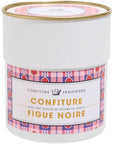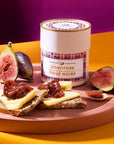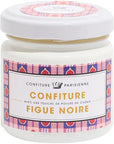


Black Fig & Blackcurrant Pepper
SKU: 50893
Confiture Parisienne likes to take you into uncharted territory with recipes that may seem classic but have that little extra ingredient. To kick off the festive season, Confiture Parisienne offers you fig jam with blackcurrant pepper. All French, of course, and still made in their Paris laboratory! This jam will work just as well in the morning on your toast as it will at mealtime with a cheese platter.
These statements have not been evaluated by the Food and Drug Administration. This product is not intended to diagnose, treat, cure, or prevent any disease.
May Contain Traces Of: Egg, All Nuts, Gluten, Sesame And Milk.
These statements have not been evaluated by the Food and Drug Administration. This product is not intended to diagnose, treat, cure, or prevent any disease.
Since ancient times, foodies have developed various recipes for preserving fruits by cooking them with wine or honey.
But to taste jams as we know them, you have to wait for the first crusades and the introduction of cane sugar from the Arab world. This luxury food allows the transformation of fruit into jam, only reserved for royal tables. At the beginning of the 19th century, the production of beet sugar democratized this product. In Paris, many jam makers opened their stalls and supplied themselves with fruit from the surrounding orchards.



